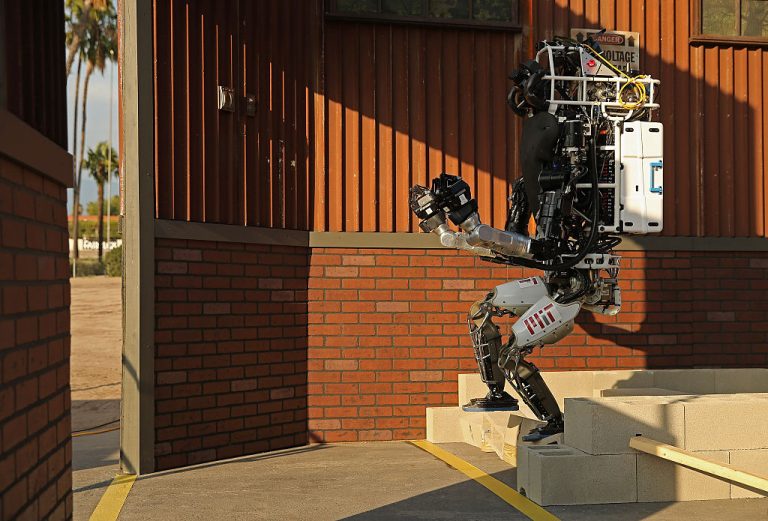As modern mankind continues headstrong in its agenda to change the living conditions of human life and the human environment, major technological advancements are certainly being achieved.
Yet, some such advancements carry with them heavy risks.
This principle is made clear in a recent achievement by researchers at the Massachusetts Institute of Technology who “have made significant steps toward creating robots that could practically and economically assemble nearly anything, including things much larger than themselves, from vehicles to buildings to larger robots,” according to a Nov. 22 Press Release.
MIT explains that its Center for Bits and Atoms (CBA) “has shown that both the assembler bots and the components of the structure being built can all be made of the same subunits, and the robots can move independently in large numbers to accomplish large-scale assemblies quickly.”
The team explains that the development is based on previous experiments involving “large, usable structures built from an array of tiny identical subunits called voxels (the volumetric equivalent of a 2-D pixel).”
Success
You are now signed up for our newsletter
Success
Check your email to complete sign up
The Release explained, “The robots themselves consist of a string of several voxels joined end-to-end. These can grab another voxel using attachment points on one end, then move inchworm-like to the desired position, where the voxel can be attached to the growing structure and released there.”
But the major advancement is that “complex voxels that each can carry both power and data from one unit to the next” have been completed.
Director of the CBA Neil Gershenfeld stated rather bluntly, “When we’re building these structures, you have to build in intelligence.”
He explained further that because earlier versions of the system required connections from bundled wires between power sources and control boxes, “What emerged was the idea of structural electronics — of making voxels that transmit power and data as well as force.”
Both the added mobility and addition of intelligence is required, the press release stated, because the machines are required to make complex decisions every step of the way as they build themselves and their target object.
The more primitive system faced a significant limitation in that “as the size of those structures reached a certain point in relation to the size of the assembler robot, the process would become increasingly inefficient because of the ever-longer paths each bot would have to travel to bring each piece to its destination,” Gershenfeld was paraphrased as explaining.
But with their new abilities, “The bots could decide it was time to build a larger version of themselves that could reach longer distances and reduce the travel time. An even bigger structure might require yet another such step, with the new larger robots creating yet larger ones, while parts of a structure that include lots of fine detail may require more of the smallest robots.”
Gershenfeld noted, however, that the technology is not yet advanced enough to truly begin self assembly, “But we are almost — but not quite — at the point where one of these robots makes another one and it walks away. And that’s down to fine-tuning of things, like the force of actuators and the strength of joints. … But it’s far enough along that these are the parts that will lead to it.”
















